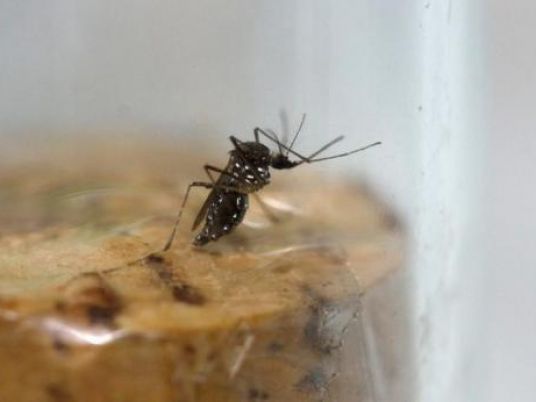
Since the beginning of the Zika outbreak in Brazil that is now spreading rapidly in the Americas, public health authorities have cited a statistic that only about one in five people infected by the virus develops any symptoms.
Experts, however, are now questioning whether this standard assumption understates the actual percentage who become ill, saying the finding was made nearly a decade ago in a vastly different setting: a sparsely populated island in Micronesia.
"We have to question that number," said virologist Mauricio Lacerda Nogueira of the São Jose de Rio Preto medical school in the Brazilian state of São Paulo. "The reality of an outbreak on a small island is completely different from that in a big country with many different types of people, climates and other conditions."
The question is important for authorities in Brazil and elsewhere to measure the true extent and impact of the outbreak linked to a rise in cases of the birth defect microcephaly. Knowing the actual percentage of people who develop symptoms also could better prepare public health officials for future outbreaks of this poorly understood virus.
Medical experts said there was reason to believe the widely cited ratio might not be accurate.
"It was a single study that was done in one place at one time," says Marc Fischer, an epidemiologist at the US Centers for Disease Control and Prevention (CDC) and an author of the paper on the 2007 outbreak published in the New England Journal of Medicine in 2009. "To establish a better number, it needs to be done in other settings and with other populations."
Fischer and other researchers said the current outbreak, which has triggered a global health scare, could lead to a different evaluation of what percentage of people infected by the virus end up getting sick.
Because Zika is believed to generate immunity in those who have already been infected, knowing the rate of infection during this epidemic also could help doctors calculate how many people might remain susceptible if the virus returns.
Scientists do not dispute that the calculation made on Micronesia's Yap Island, where the 2007 study was conducted, was valid for that outbreak. The paper was peer-reviewed and is one of the few published studies on a Zika outbreak.
Much remains unknown about Zika, including whether the virus actually causes microcephaly, a condition marked by abnormally small heads in babies that can result in developmental problems. Brazil has said it has confirmed 508 cases of microcephaly believed to have followed Zika infections and is investigating more than 3,900 other cases.
Impacts on a larger population
Scientists believe some suspected complications from Zika are only now surfacing because Brazil, Latin America's largest country, has a far bigger and denser population than the sites of previous outbreaks.
Yap Island, an isolated 35 square miles (90 sq km) of land, is home to just over 7,000 people.
In that study, researchers obtained blood samples from a random selection of 557 residents to arrive at an "estimated ratio" of a single symptomatic person for every 4.4 people who showed laboratory signs of having been infected with Zika but showed no signs of sickness.
The ratio on Yap Island also could have been affected by the fact that blood tests can confuse Zika antibodies with those of similar infections, like dengue, which previously infected some islanders, the CDC's Fischer said.
Nikos Vasilakis, a researcher at the Center for Biodefense and Emerging Infectious Diseases at the University of Texas Medical Branch, said the percentage of asymptomatic cases for viruses similar to Zika can fall "anywhere between 40-80 percent, depending on the location, epidemic, virus circulating, etc."
Without better tools to accurately count the number of Zika infections, especially among people who may never have shown symptoms, a new ratio could remain elusive.
Brazilian officials are relying primarily on symptoms to make clinical diagnoses for most patients. Zika in most people is treated as a minor illness.
For worrisome cases, such as pregnant women or people showing signs of neurological complications, doctors seeking to diagnose a possible Zika infection must use costly and time-consuming genetic testing. Such testing is available only at major laboratories and is possible only during the brief window of less than a week when patients typically exhibit symptoms.
In the absence of faster, more affordable testing, Brazil’s health ministry has estimated that as many as 1.5 million people may have been infected so far.
"I am seeing many, many sick people," says Carlos Brito, a physician in the northeastern Brazilian city of Recife, who was among the first to notify authorities last year of a mysterious new outbreak. "It's hard to believe there could be many times more out there infected."




